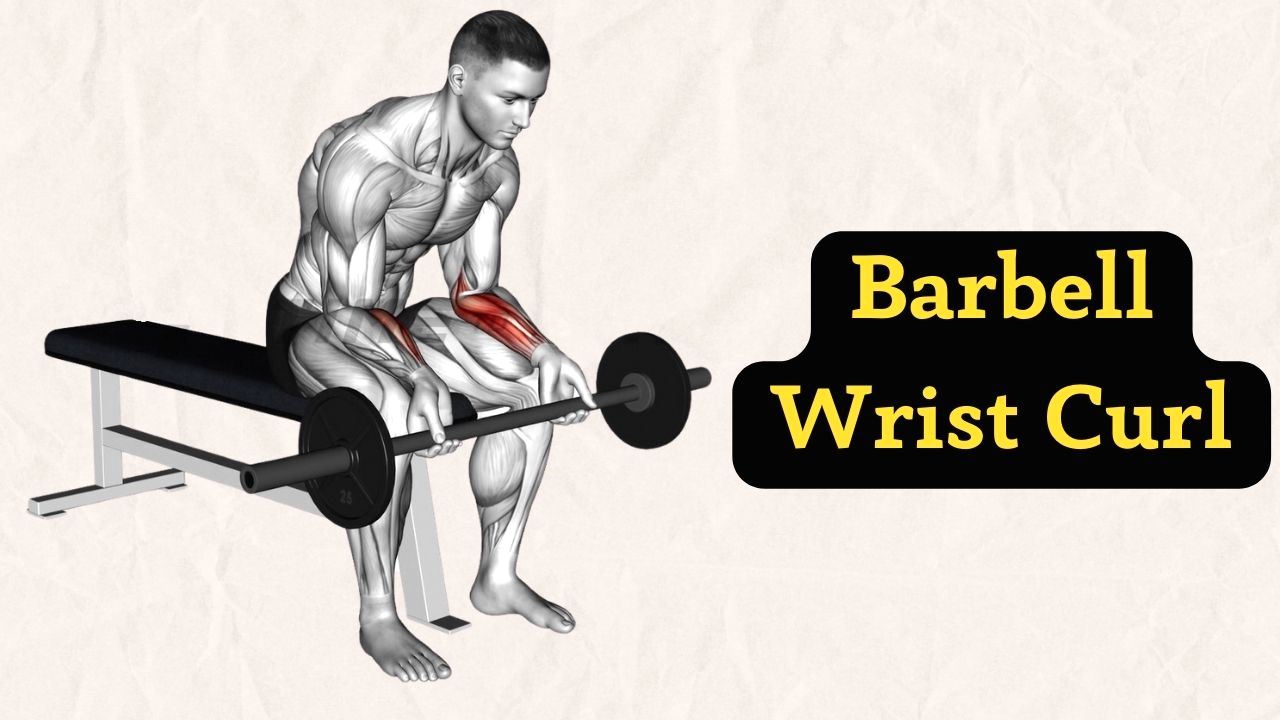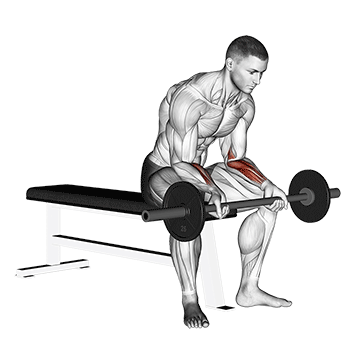The barbell wrist curl is an isolation exercise that targets the flexor muscles in your forearms, the muscles responsible for gripping and wrist flexion.
But don’t underestimate its simplicity.
Barbell wrist curls are a simple yet effective way to build bigger and stronger forearms, improve grip and wrist strength, and enhance weight-lifting capability.
According to the study, a 12-week periodized forearm training program can enhance wrist and forearm strength and bat-end velocity in baseball players.
Unlike some muscle groups that respond quickly to training, forearms can notoriously resist growth. This is partly due to their high endurance and constant daily use. To see a noticeable difference in forearm strength and size, you might need to bump up the training frequency compared to other muscle groups.

How To Do Seated Barbell Wrist Curl

- Sit comfortably on a bench with your back straight and core engaged.
- Grasp the barbell with a supinated grip (palm facing up).
- Rest your forearms on your thighs. Your wrists should extend slightly over the edge of the bench, with the backs of your hands resting on your quads.
- Keep your forearms flat on the bench and slowly curl the barbell by flexing your wrists.
- Hold at top contraction and then slowly lower the barbell back to the starting position.
- Perform 10–15 repetitions and 3–4 sets.
Tips and Form
- Keep your elbows glued to your thighs throughout the exercise. Don’t use any swinging or jerking motions to lift the weight.
- Ensure that you are not using your biceps or shoulders to help lift the barbell.
- Avoid lifting weights that are too heavy, as this can lead to poor form and increase the risk of injury.
- To increase the difficulty of the exercise, use a thick bar or add fat grips to your barbell. This variation challenges your grip strength and activates more forearm muscle fibers.
- Try not to open the fingers at the bottom of the movement. Just move the wrist.
- After completing your full range of motion reps, add a few partial reps at the end of each set.
- Allow the weight to drop as far as comfortable at the bottom of the movement to maximize stretch on the forearms.

Manish is a NASM-certified fitness and nutrition coach with over 10 years of experience in weight lifting and fat loss fitness coaching. He specializes in gym-based training and has a lot of knowledge about exercise, lifting technique, biomechanics, and more.
Through “Fit Life Regime,” he generously shares the insights he’s gained over a decade in the field. His goal is to equip others with the knowledge to start their own fitness journey.
